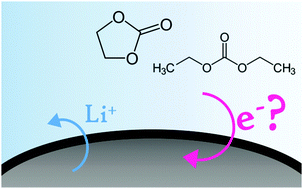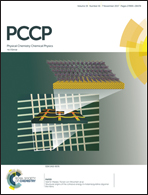Revealing the electronic character of the positive electrode/electrolyte interface in lithium-ion batteries†
Abstract
High voltage operating active materials are among the most promising components for positive electrodes of future high energy lithium-ion batteries. However, the operating potential range of such materials often exceeds anodically the thermodynamic stability window of the electrolyte. A surface layer is therefore formed, which is supposed to be one of the reasons for the high irreversible charge loss of these electrodes. The electronic character of such a surface layer formed at the electrode/electrolyte interface of LiNi0.5Mn1.5O4 (LNM), stoichiometric (x = 0) and overlithiated (x = 0.1) Li1+x(Ni1/3Mn1/3Co1/3)1−xO2 (NMC) based paste electrodes was investigated in situ using feedback-mode scanning electrochemical microscopy (SECM). The role in the formation of an electronically insulating layer of a conductive carbon additive-based electrode and of the Al current collector was explored as well. The surface layers formed on all oxide based paste electrodes and on conductive carbon additive based electrodes showed unexpectedly an electronic conducting behavior, while the Al current collector formed an electronically insulating layer which was found to be influenced by the electrolyte.



 Please wait while we load your content...
Please wait while we load your content...